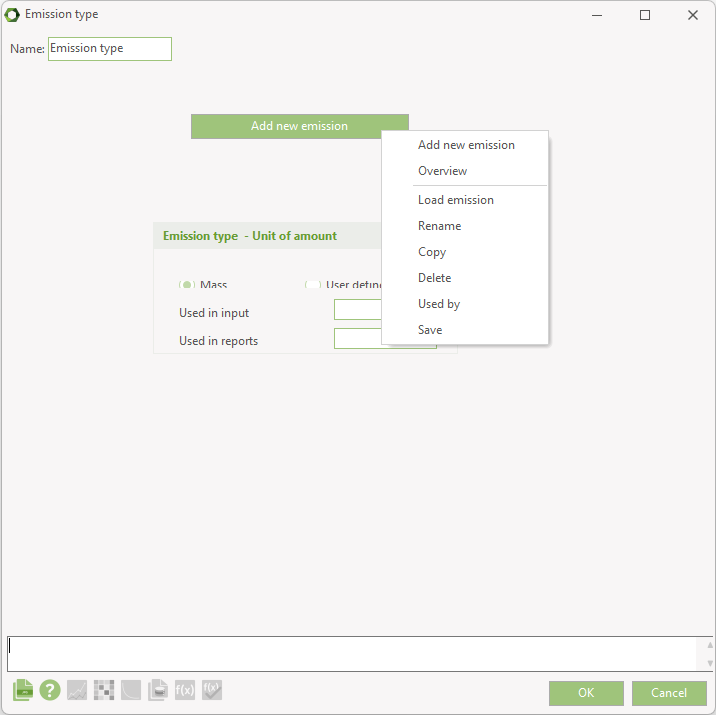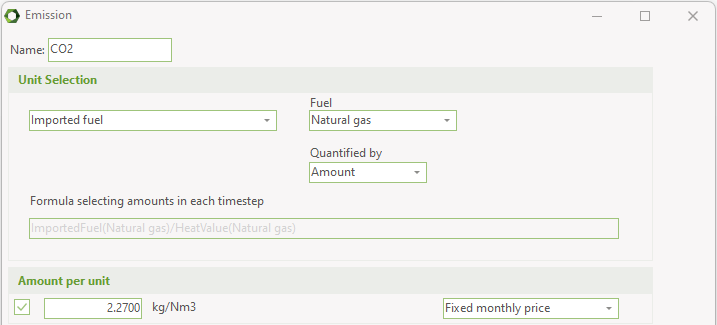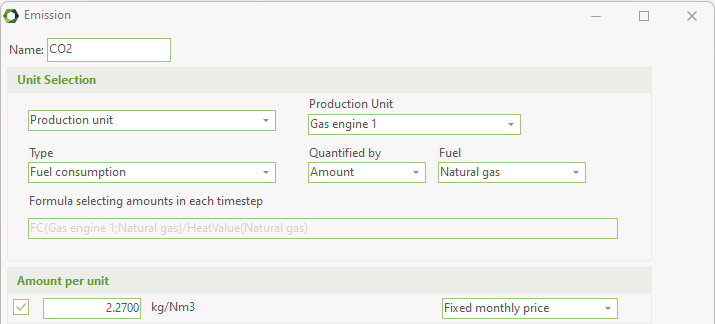Environment
This option is used to define emissions in energyPRO, such as \(CO_2\), \(NO_x\) and \(CO_2\).
Further, you can specify \(CO^2\) and PEF intensity calculations. For more information on that please see the how-to-guide “Carbon and primary energy calculation” at emd.dk
The environment option is also used to structure the report “Environment, summary”.
Emission types can be established by clicking the "Environment" option on the left-hand vertical menu and then select the option “Emission type” on the top ribbon menu.
To each emission type physical units of amounts has to be chosen. This is done in the editing windows, corresponding with the actual emission folders. For each emission type, there are two options for units. Those are:
- Mass
- User defined
The first one is shown in the figure below. There are five mass units that are allowed. Those are “gram”, “kg”, “tonne”, “1000 tonnes” and “mio.tonnes”. The “Used in input” unit is the one used when describing specific emission values in the editing window. The “Used in reports” units is the one used in the “Environment”-report. If the emission type is “user defined”, it is possible to type in a text string instead. This will be used instead of the five predefined mass units, and will appear both in input data and in the reports.

For each emission type, an unlimited number of emissions can be added. A new emission is added by clicking the "Environment" option from the left-hand vertical menu and choosing "Emission type" from the top ribbon menu or simple pressing the “Add new emission” on the emission type window, see the figure above.
This will open an editing window to specify the emission. This window is similar to the window used in the economy to describe “Revenues” and “Operation expenditures”. Please refer to Reference, Revenues and Operational Expenditures, and to Functions, where you find a detailed description of the functions to be used in energyPRO.
Normally it is simpler to model the emissions in the “Revenues” and “Operation expenditures”. Most cases are covered within two different situations, as emissions are normally directly related to either the amount of used fuel or to the process of energy conversion.
The first case is the situation \(CO_2\). In the figure below the case is described by choosing “Imported fuel”, the fuel “Natural gas” and a specific amount of 2,27 \(kg/Nm_3\).

Note that the “kg” part of the unit comes from emission type unit and the \(Nm_3\) part comes from the unit in which the actual fuel is typed.
In the second case where emissions is technology dependent, the situation can normally be described by choosing “Production unit”, “Fuel consumption” and the desired production unit in the production unit combo-box, in this example “Gas engine 1”.

If the project is in either FINANCE or ACCOUNTS it is also possible to attach an index to the amount of emission per unit. This is useable for simulating e.g. changing \(CO_2\) emission of imported electricity over the years.

Primary Energy Factors Economic input data.